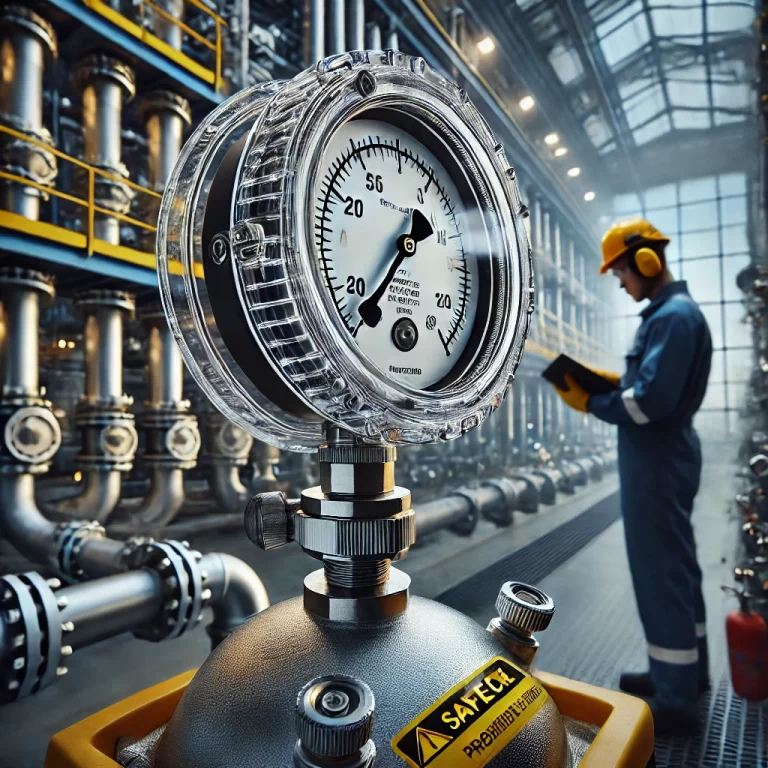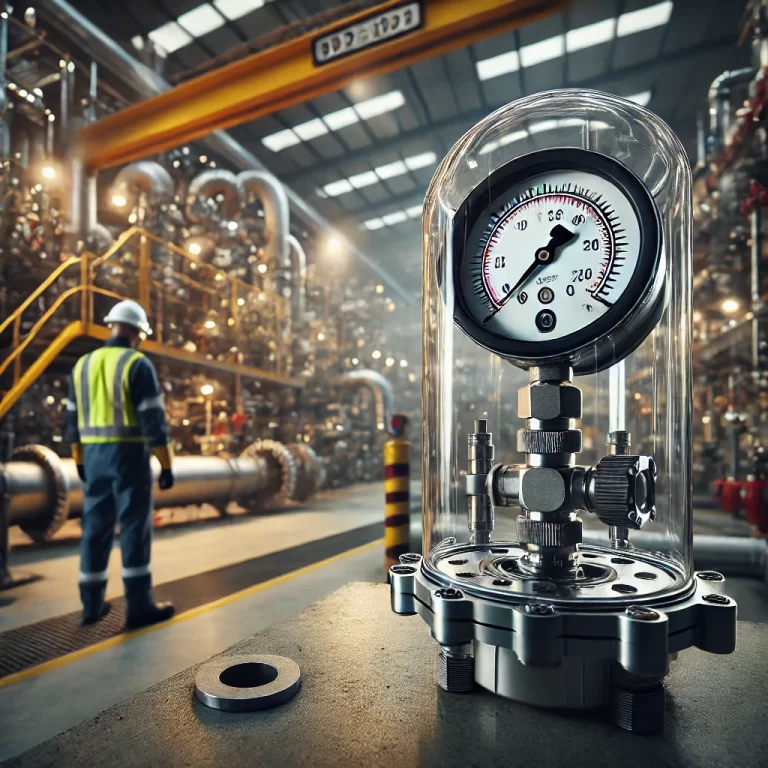In industrial and laboratory settings, high-pressure gauges play a critical role in monitoring and maintaining safe operating conditions. These devices are essential for measuring system pressure accurately, but their usage also comes with inherent risks, especially in high-pressure environments. Therefore, installing protective covers and pressure relief devices on high-pressure gauges is not just a precautionary measure but a fundamental safety requirement.
1. The Role of Protective Covers in High-Pressure Gauges
a. Personnel Safety: High-pressure gauges are susceptible to mechanical failure, which can result in glass shattering or gauge components becoming projectiles. A protective cover acts as a barrier, preventing injury to personnel caused by flying debris or sudden fluid release.
b. Equipment Protection: Protective covers shield the gauge from accidental physical damage, such as impacts, vibrations, or exposure to harsh environmental conditions. This ensures a longer operational lifespan and consistent accuracy of the gauge.
c. Compliance with Industry Standards: Many safety standards, such as those established by the American National Standards Institute (ANSI) and International Organization for Standardization (ISO), mandate the use of protective covers for high-pressure gauges in certain applications.
Recommendations:
Use explosion-proof or safety-pattern pressure gauges designed for high-pressure applications.
Equip gauges with transparent, impact-resistant protective covers.
Ensure the protective cover does not obstruct gauge visibility.

2. The Role of Pressure Relief Devices in High-Pressure Gauges
a. Preventing System Overpressure: Pressure relief devices are designed to prevent catastrophic failures by allowing excess pressure to safely escape the system. Without these devices, pressure buildup could lead to gauge rupture, causing hazardous leaks or explosions.
b. Enhancing Operational Safety: By providing a controlled release mechanism, pressure relief devices ensure that operators remain safe even if pressure surges occur unexpectedly.
c. Regulatory Compliance: Many industry regulations require high-pressure systems to incorporate pressure relief mechanisms to mitigate risks associated with overpressure events.
Recommendations:
Choose pressure gauges with built-in blow-out back designs, allowing pressure to vent safely away from personnel.
Install dedicated pressure relief valves in systems where high-pressure spikes are frequent.
Regularly inspect and maintain relief devices to ensure they remain functional.
3. Best Practices for Installation and Maintenance
a. Proper Installation:
Ensure that the gauge’s maximum pressure rating exceeds the system’s maximum operating pressure by at least 25-50%.
Install gauges in locations where protective covers and relief devices are easily accessible for inspection.
b. Routine Inspection and Maintenance:
Regularly check protective covers for damage or wear.
Test pressure relief devices periodically to verify proper functionality.
Replace any damaged components immediately.
c. Operator Training:
Educate operators on the importance of protective measures.
Provide clear instructions for handling and maintaining high-pressure gauges.

4. Conclusion
The installation of protective covers and pressure relief devices on high-pressure gauges is not merely an option but a necessity for safe and reliable operations. These measures not only protect personnel from injury and prevent equipment damage but also ensure compliance with safety standards. Companies and technicians must prioritize these safety measures, coupled with regular inspections and proper training, to create a secure and efficient working environment.
By implementing these practices, businesses can minimize risks, reduce maintenance costs, and uphold a strong commitment to workplace safety and operational excellence.
